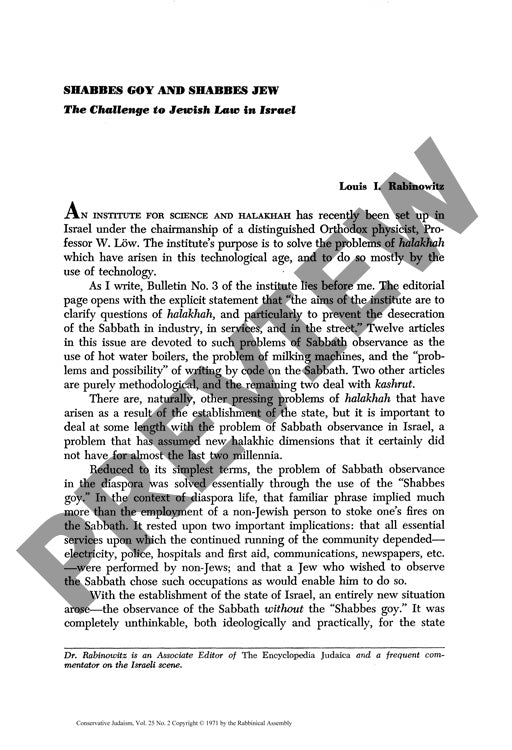Shabbes Goy and Shabbes Jew the Challeng
Couldn't load pickup availability
Israel's establishment as a Jewish state created an unprecedented halakhic dilemma: how could a modern nation function while maintaining traditional Sabbath observance? The transition from diaspora dependence on non-Jewish assistants ("Shabbes goy") to the need for Jewish workers in essential services ("Shabbes Jew") has met with surprising resistance from rabbinical authorities. Through analysis of responsa, institutional decisions, and case studies of technological innovations like microphone systems and automatic elevators, a pattern of extreme stringency emerges among Israeli religious leadership. Examination of halakhic rulings, correspondence between chief rabbis, and institutional practices across jurisdictions reveals a systematic retreat from potentially lenient interpretations, driven largely by fears of appearing reformist. Despite clear halakhic principles regarding pikuach nefesh (preservation of life) that could justify essential Sabbath services, rabbinical authorities have failed to develop comprehensive civil law (hilkhot medinah) for state governance. This conservative shift is exemplified by the retraction of previously granted permissions for technological adaptations and the suppression of scholarly works containing moderate positions. Contemporary Orthodox leadership has thus adopted an increasingly rigid approach that contradicts traditional halakhic flexibility, squandering opportunities to adapt Jewish law to the realities of sovereign statehood.

More Information
-
Physical Description
-
Publication Information
Published 1971
ISBN
-
Publication Credits
Louis Rabinowitz

